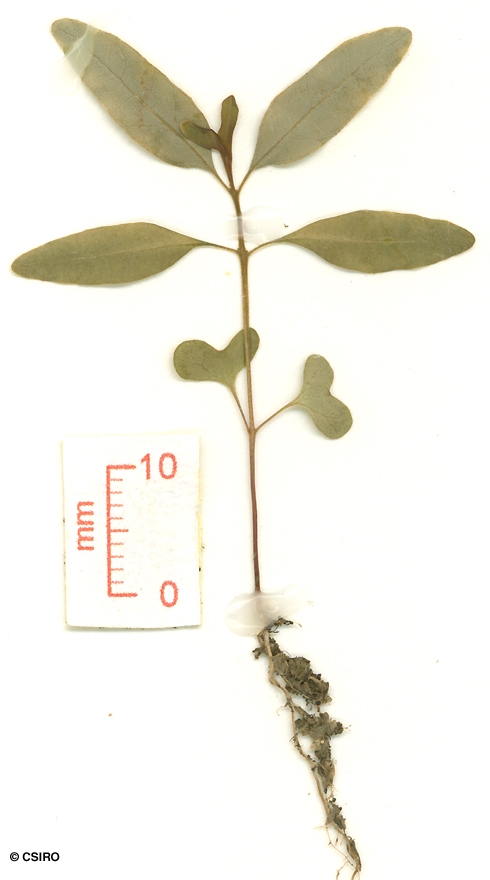Australian Tropical Rainforest Plants - Online edition
Eucalyptus resinifera Sm. subsp. resinifera



Johnson, L.A.S. & Hill, K.D. (1990) Telopea 4(1): 45.
Forest Mahogany; Red Stringybark; Red Messmate; Red Gum; Red Mahogany; Mahogany, Red; Kino Eucalyptus; Jimmy Low; Highland Red Mahogany; Hickory; Grey Gum
Bark rather thick, fibrous, persistent to the small branches, greyish to reddish brown.
Oil dots visible with a lens if not visible to the naked eye. Leaf blades about 8-14 x 1.6-3.2 cm, often slightly curved.
Peduncles flat, strap-like. Individual flowers pedicellate. Operculum cornute to conical, about 5-6 mm diam., longer than the calyx tube (hypanthium). Outer operculum shed early, before the mature bud stage.
Cotyledons reniform or +/- bilobed. Oil dots more obvious near the margins but visible only with a lens. At the tenth leaf stage: leaf blade narrowly elliptic or lanceolate, glabrous, scattered oil dots visible with a lens. Lignotuber absent. Seed germination time 5 to 14 days.
Endemic to Australia, occurs in CYP, NEQ, CEQ and southwards to south-eastern New South Wales. Altitudinal range in CYP and NEQ from 500-1100 m. Grows in wet sclerophyll forest and on rain forest margins.
This species produces a useful timber and is well suited for use in polished floors. Swain (1928).
Trees of this species sometimes have 'wells' located in the bark of the upper stem. These 'wells' are the work of the Yellow-Bellied Gliders which chew the holes and then return each night to feed on the exudate from the damaged phloem or cambial layer.
Wood specific gravity 1.00 Cause et all (1989).





